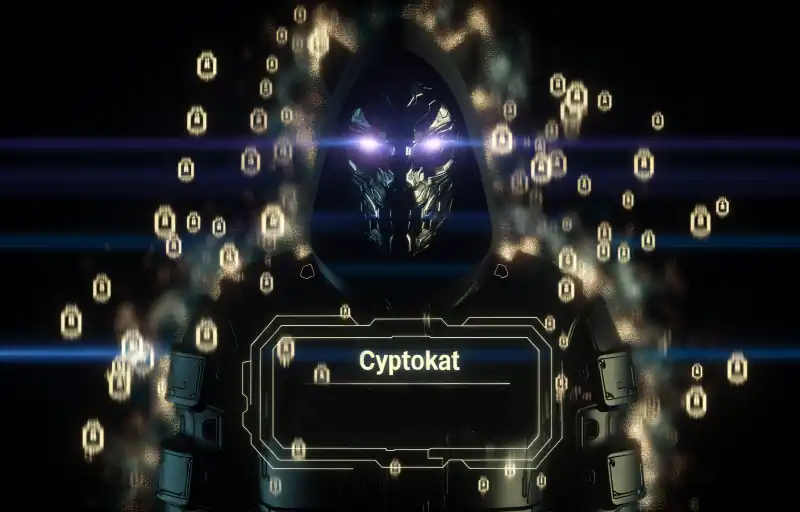
“CryptoKat: Swift, Secure, and Sinister – The New Threat in Town”
Analyzing CryptoKat: The New Ransomware Menace on the Dark Web
A new ransomware, dubbed CryptoKat, has emerged on the dark web, stirring significant concern within the cybersecurity community. The ransomware was first reported by the cybersecurity analyst MonThreat on their social media platform X, highlighting its advanced features and potential threat level. CryptoKat boasts several sophisticated features that set it apart from other ransomware variants. Notably, it employs state-of-the-art AES (Advanced Encryption Standard) to encrypt files, ensuring robust security. What makes CryptoKat particularly alarming is its claim of fast encryption, utilizing maximum disk speed to lock down a victim’s data quickly.
CryptoKat represents a new chapter in the ongoing battle between cybercriminals and cybersecurity experts. This ransomware not only encrypts data but does so with alarming speed and efficiency, leaving victims with little time to react before their files are locked and a ransom demand appears. According to MonThreat, what sets CryptoKat apart is its ability to infiltrate systems without triggering traditional antivirus defenses. This stealthy approach allows it to spread widely before detection, compounding the potential damage.
The emergence of CryptoKat on the dark web is particularly troubling due to its accessibility to cybercriminals who lack sophisticated hacking skills. Ransomware-as-a-Service (RaaS) has become a popular model on the dark web, where developers offer their malicious software in exchange for a cut of the ransom profits. This means that even less experienced hackers can launch devastating attacks using CryptoKat, broadening the scope of potential targets.
The implications of such attacks are far-reaching. Businesses, healthcare institutions, and government agencies are among the most at risk, but individual users are not immune. The loss of critical data can cripple operations, lead to significant financial losses, and erode public trust. Moreover, there’s an increasing trend of double extortion tactics, where attackers not only encrypt data but also threaten to release it publicly if the ransom isn’t paid. This adds an additional layer of complexity to the decision-making process for victims contemplating whether to pay the ransom or risk public exposure of sensitive information.
In response to this growing threat, cybersecurity experts are advocating for more robust defensive measures. Education on cybersecurity best practices remains a cornerstone of prevention. Users are encouraged to regularly update their software, back up their data, and be vigilant about suspicious emails and links, which are often the starting point for ransomware attacks. Additionally, investment in advanced threat detection systems that can identify and neutralize threats before they cause harm is becoming increasingly necessary.
As we continue to navigate this challenging digital era, the rise of ransomware like CryptoKat serves as a stark reminder of the importance of cybersecurity vigilance. While it may seem daunting, the collective effort of individuals and organizations in enhancing their cyber defenses can make a significant difference in mitigating these threats. The battle against ransomware is ongoing, but with continued education, investment in technology, and international cooperation, we can safeguard our digital world against these evolving cyber threats.














